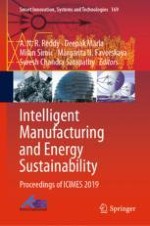2020 | Book
Intelligent Manufacturing and Energy Sustainability
Proceedings of ICIMES 2019
Editors: Dr. A.N.R. Reddy, Dr. Deepak Marla, Dr. Milan Simic, Dr. Margarita N. Favorskaya, Dr. Suresh Chandra Satapathy
Publisher: Springer Singapore
Book Series : Smart Innovation, Systems and Technologies
